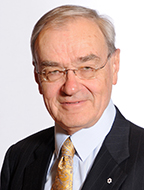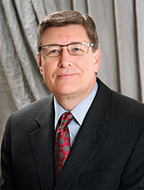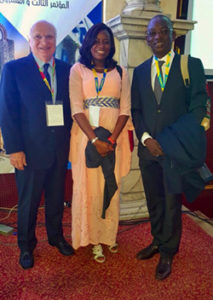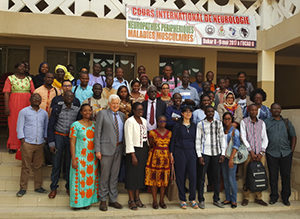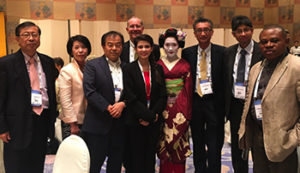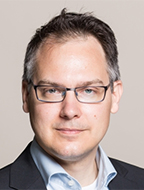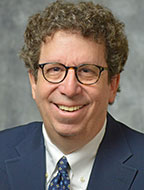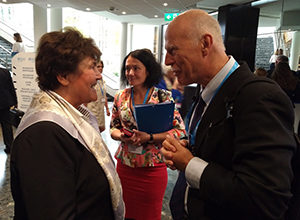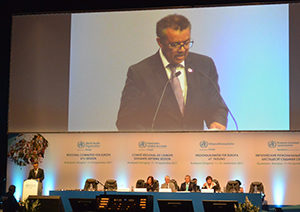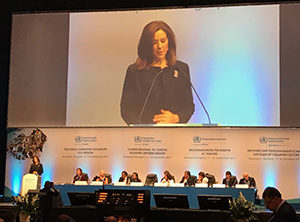By Frank W. Stahnisch, MD, MSc, PhD
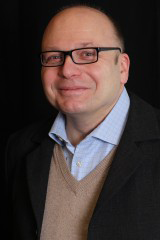
Frank W. Stahnisch, MD, MSc, PhD
World War II drew to a close in Europe on May 8, 1945. Many institutes for brain research, psychology, and psychiatry of the former Kaiser Wilhelm Society (KWG) were destroyed. Numerous scientists and scholars had died or were forced into exile in America, Britain, and elsewhere around the globe, where they found new working environments after the Nazis had seized political power 12 years before.
Institute estates, scientific instruments, and large quantities of archival material had been put on trucks and train carts, making their way to the allied occupation zones of West Germany and evading the Soviet zone in the East.
A prominent example is the former Institute for Brain Research of the KWG, headed by neuroanatomist Oskar Vogt (1870-1959) and his wife Cécile Vogt-Mugnier (1875-1962). The institute was scattered over as many places as Bochum, Cologne, Duesseldorf, Dillenburg/Giessen, and Frankfurt am Main.
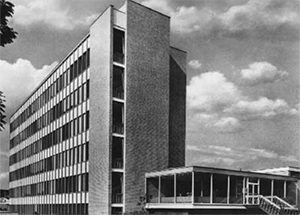
The Max Planck Institute for Brain Research in Frankfurt am Main, Germany, ca. 1962. Courtesy of Max Planck Society.
Since the new founding of the Max Planck Society (Max-Planck-Gesellschaft or MPG) in 1948, many questions were posed regarding the reconstruction of destroyed research buildings, brain research laboratories, and pathology collections during the postwar period.
Despite the strenuous effort of coming to terms with the past (“Vergangenheitsbewaeltigung”) of the KWG and its problematic research tendencies (such as in eugenics, inherited nervous diseases, and military-related neurophysiological research) in the wider field of neurology and psychiatry, most of these processes were similarly embedded in the contemporary histories of the Federal Republic of Germany and even Western Europe. Economic and administrative parallels can, for example, be drawn to the founding of the Medical Research Council (1919) and the National Health Service (1948) in Great Britain or the French National Institute of Health and Medical Research (Institut national de la santé et de la recherche médicale or INSERM) in 1964.
These occurrences were tightly interconnected with history of science and cultural trends. They influenced the life and working contexts of MPG staff as well, commencing with an initial restoration period in the immediate postwar period (1945-1955) to the reconfiguration of the field during prolonged times of economic prosperity (1955-1972). Profound reforms and research consolidation emanated between 1972 and 1990, triggered by prevailing economic and energy crises, to finally lead to an advanced growth after German re-unification and an increasing process of globalization in Western industrialized countries (1990-2002).
Reconstruction
The general reconstruction process in and of the neurosciences, behavioral sciences, and cognitive sciences in the Max Planck Society was, however, not determined through research priorities alone. Considerations for training junior staff were equally as important. It received important attention through MPG leadership that tried to rebuild its international linkages to catch up with the world level in neuroscience research.
The exchanges with the American Neuroscience Research Program (NRP), founded by MIT neurophysiologist Francis O. Schmitt (1903-1995), played an important part in the rebuilding of and the interdisciplinary formation of the neuroscience field in West Germany. Schmitt, who was of German ancestry, had great sympathy for this European country and upheld close personal relations, for example, with neurochemist and later Nobel laureate Manfred Eigen (b. 1927) in Goettingen, Germany.
Eigen was engaged with the idea of the NRP and managed to find substantial financial support through the German Volkswagen Foundation (Volkswagenstiftung) — although not quite a philanthropic institution like the American Rockefeller Foundation. It enabled many young investigators and students to participate in cutting-edge meetings of the NRP and the legendary Boulder meetings at the Rocky Mountains campus of the University of Colorado.
As a consequence, German neuroscientists took part in the events in comparatively high proportion, as did British, Scandinavian, and later, Japanese researchers during the postwar period. To German neuroscientists, the monetary endowment and infrastructure of the NRP appeared unimaginably affluent, as there seemed to be no limits. Since the inception of the program, Schmitt had organized a private foundation to sustain these endeavors. His Neuroscience Research Foundation (NRF), with its bylaws modeled after those of the Massachusetts General Hospital in Boston, enabled NRP associates to organize several work sessions in their own fields and at their full liberty, including only the expectation that cutting-edge topics in neurology and neuroscience had to be addressed.
Moving Forward
Special emphasis was thereby given to fringe areas, such as molecular neurobiology and quantum computing. Sometimes, non-associates had to organize them, while participants looked overwhelmed by the possibilities given to them. Those who took active part in the NRP as (Senior) Fellows in Residence at Brandegee Mansion and Estate near Boston described it as a “castle” or “palace.” Some of the early German participants were “really jealous” about its affluence. It offered many rooms, a big dining hall, and a ballroom for many types of gatherings. There was even a possibility to stay and work in the library of the building. Many of the directors of the relevant postwar Max Planck Institutes had themselves studied at the NRP for professional reasons and advanced their own academic careers.
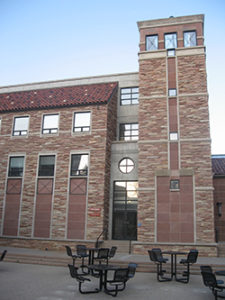
The chemistry building with lecture halls (in 2013) in which many of the NRP sessions were held at the University of Colorado Boulder Campus during the 1960s and 1970s. Courtesy of Frank W. Stahnisch.
Nearly everyone who got a professorship in West German neurosciences during the 1970s and 1980s had actively taken part in the legendary Boulder meetings of the NRP and published in the Neurosciences Research Bulletin® (MIT press journals). As a corollary of these personal and institutional efforts, at least 15 years after the beginning of the NRP, West Germany had reached back on the international level of neuroscientific research and overcome some of the devastating effects on the field through World War II.
Given the enormous scope of this historical research project, four major levels of investigation have been singled out. They question the field of neuroscience as an area of specific research clusters and groups of disciplines:
- Which MPG institutes in West Germany were part of the neuroscience-related clusters? (Even if “neuroscience” was not included in their titles and/or contributed to it with their specific divisions?)
- How did these institutes and divisions compare to other institutes in the biomedical section of the MPG or to comparable international institutions?
- Why was the MPG specifically interested in the area of neuroscience, behavioral science, and cognitive science? Were decisions made to support other areas of biomedical science in the same way and why? Internal developments of science (such as opportunities for innovation, methodical re-directions, and the inclusion of global developments in the neurosciences), as well as societal and political expectations impacted the decision-making processes in this para-university research institution for advanced science.
- Where did the planning ideas for research programs originate and through which agendas could they be realized at the time?
Is it possible to determine the meaning of the cluster for the MPG further, while also looking at the MPG’s administrative and economic roles for the cluster (and its resources)?
Which actors and networks played specific roles in the formation and development of the cluster as a whole? What were main trends in the research developments for the development of the neuroscientific area during the postwar period as a whole?
During a period of five years, many of these matters shall be answered and documented through historical sources. They will be analyzed under the auspices of the History of the Max Planck Society Research Program, leading to several scholarly articles and an overview book. •
The author currently contributes as a senior visiting scholar to the research program on the history of the Max Planck Society, inaugurated by the MPG president, Professor Martin Stratmann, and is led by a group of directors around Professor Juergen Renn from the Max Planck Institute for the History of Science (For more information, see the English website at gmpg.mpiwg-berlin.mpg.de/en/). The author collaborates with the research group, seeking to analyze and reconstruct the development of the neurosciences, behavioral sciences, and cognitive sciences in the relevant institutes of the Max Planck Society.
The neuroscience-related institutes have formed a central field of research in the Max Planck Society since its foundation in 1948. Their shared social references and thematic overlap constitute an interface between the life sciences, medicine, and the humanities (including psychology and cognitive science). For this reason, they are of particular scientific interest for several aspects of the research program addressing the wider cultural context and implications of the neurosciences.
The author seeks assistance from the international community of neurological investigators regarding personal recollections from research stays at neuroscience-related Max Planck Institutes, archival materials (outside of collections held in the Max Planck Society), along with information related to international collaborations between global institutions and individual Max Planck Institutes between 1948 and 2006. His contact details can be found at hom.ucalgary.ca.
For a preliminary publication indicating the scope and depth of the research project, see Stahnisch, F.W.: “Mapping Mind and Brain in ‘Modern’ Ways — On the Emergence of Interdisciplinary Approaches in the German Neuromorphological Sciences,” Journal of the History of the Neurosciences, 21 (2012): 96-7.
Dr. Stahnisch is a medical historian at the University of Calgary in Alberta, Canada. Visit the website of the history of medicine and health care program at hom.ucalgary.ca.
He is currently pursuing a collaborative research project with colleagues in Berlin and Jerusalem that investigates the development and differentiation of modern neuroscience at the German Max Planck Society.
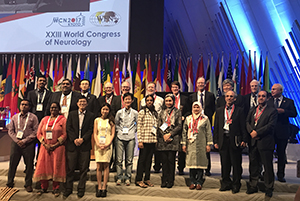
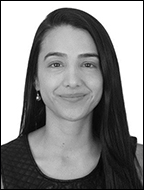
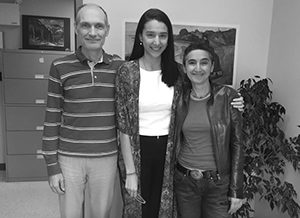

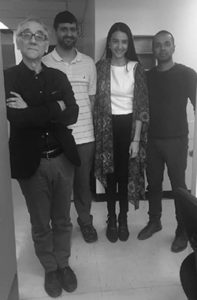 Having the opportunity to perform training like this opens the mind in terms of academic and social skills. It allowed me to explore different approaches to the clinical questions of patients with epilepsy that arise in the course of daily patient care. It allowed me to learn how countries with a better economic background than mine solve different clinical questions because they have the resources to solve the smallest details. At the end, the real challenge is to come home to try to figure out what do with what we have.
Having the opportunity to perform training like this opens the mind in terms of academic and social skills. It allowed me to explore different approaches to the clinical questions of patients with epilepsy that arise in the course of daily patient care. It allowed me to learn how countries with a better economic background than mine solve different clinical questions because they have the resources to solve the smallest details. At the end, the real challenge is to come home to try to figure out what do with what we have.